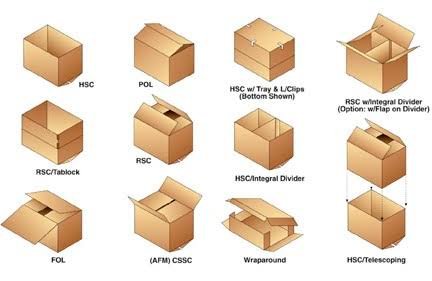business
Unlocking the Versatility of Boxes From Storage to Innovation
Boxes those seemingly simple containers play an indispensable role in our lives. They serve a multitude of purposes from storage and packaging to innovation and artistic expression.

Boxes those seemingly simple containers play an indispensable role in our lives. They serve a multitude of purposes from storage and packaging to innovation and artistic expression. In this article we will delve into the world of boxes exploring their history various types and the many ways they impact our daily lives.
The Origin of Boxes

The concept of using boxes as containers has a long and fascinating history. The earliest recorded use of boxes dates back to ancient civilizations. Egyptians for instance employed wooden boxes to store their valuable possessions and artifacts. These early boxes were not only practical but also ornate showcasing the intersection of form and function.
Over the centuries boxes evolved in terms of materials shapes and uses. From the wooden crates of the industrial revolution to the cardboard boxes of modern commerce the utility of boxes has only grown. Today they are ubiquitous in our lives from the cereal box on the breakfast table to the cardboard package delivered to our doorstep.
Types of Boxes

Boxes come in a staggering array of shapes sizes and materials each designed to serve specific purposes. Let explore some common types of boxes
1. Cardboard Boxes Cardboard boxes are perhaps the most recognizable type. They are lightweight versatile and widely used for packaging shipping and storage.
2. Wooden Crates Sturdy and classic wooden crates are ideal for heavy items and rustic decor. They have a timeless appeal.
3. Plastic Bins Plastic boxes or bins are perfect for organizing and storing items in homes offices and industrial settings.
4. Gift Boxes These are designed to make a statement. They come in various shapes colors and sizes and are used for special occasions and gift giving.
5. Jewelry Boxes Often small and ornate jewelry boxes are designed to protect and display precious gems and trinkets.
6. Lunch Boxes A staple for schoolchildren and working professionals lunch boxes keep meals fresh and easily portable.
7. Toolboxes Essential for craftsmen and DIY enthusiasts toolboxes keep tools organized and accessible.
8. Innovative Boxes Some boxes are not just for storage but for innovation. For example mystery boxes and escape room puzzles rely on boxes to create interactive experiences.
The Art of Packaging

Packaging is an essential part of marketing and branding. Companies invest significant time and resources in designing boxes that not only protect their products but also convey a message about their brand. The aesthetics of a box can significantly impact a consumer perception of a product.
Luxury brands for instance, often use high quality well designed boxes to create a sense of exclusivity and prestige. Think of the iconic blue box of Tiffany & Co which has become synonymous with luxury jewelry.
Furthermore packaging can also be sustainable. Many companies are now opting for eco friendly packaging solutions such as recyclable and biodegradable boxes to reduce their environmental footprint.
Boxes and Innovation

Beyond their traditional uses boxes have become a canvas for creativity and innovation. Artists and designers have transformed boxes into unique works of art. The Japanese art of origami for example involves intricate folding of paper to create beautiful and often complex structures including boxes.
In the world of technology innovative packaging can be a key differentiator. Think of Apple sleek and minimalist product boxes which add to the overall customer experience. The unboxing of a new gadget is an event in itself and the box plays a significant role in this ritual.
DIY and Upcycling

Boxes are also a favorite medium for DIY enthusiasts. With a bit of creativity you can turn an ordinary box into a piece of functional art. From homemade storage solutions to personalized gift boxes the possibilities are endless. Upcycling the process of repurposing items often involves boxes. Old wine crates become stylish shelves and cereal boxes are transformed into magazine holders.
Conclusion
In the world of boxes there is so much more than meets the eye. From their humble origins in ancient civilizations to their modern-day versatility in packaging storage and even innovation boxes continue to shape our lives in surprising ways. They are not just containers they are carriers of history art and function.So the next time you encounter a box whether it a simple cardboard package or an intricately designed gift box take a moment to appreciate its role in our lives. Boxes are far more than just a vessel they are a testament to human creativity practicality and the ever evolving tapestry of our civilization.
business
Retaining Top Talent: How Recognition Programs Influence Employee Loyalty
In today’s competitive work environment, retaining top talent has become crucial for organizations aiming to thrive.

In today’s competitive work environment, retaining top talent has become crucial for organizations aiming to thrive. Companies invest significant resources in recruiting and training their employees, so it’s no surprise that keeping skilled individuals is a priority. One of the most effective tools to foster loyalty and reduce turnover is through employee recognition programs. Recognition programs, especially when combined with sincere “thank you” messages, can make employees feel valued, appreciated, and more committed to their workplace. This article will explore how recognition programs influence employee loyalty and provide guidance on crafting meaningful thank you messages that can reinforce this bond.
The Role of Recognition in Employee Retention
When employees feel acknowledged, they are more likely to stay engaged and invested in their roles. Recognition programs work by validating employees’ efforts, encouraging positive behaviours, and strengthening a culture of appreciation. Research has shown that employees who receive regular appreciation are often more motivated, productive, and less likely to seek opportunities elsewhere. Additionally, when recognition is part of the company culture, it boosts morale, creating an environment where employees feel seen and valued.
Why Thank You Messages Matter in Recognition Programs
A well-crafted thank you message is often more than just a token gesture. It provides a personal touch that reinforces recognition and makes it more impactful. While financial incentives, bonuses, or awards play a role in employee appreciation, personal messages create an emotional connection that resonates longer with employees. Acknowledging employees with specific, thoughtful thank you messages conveys that their contributions are valued beyond just numbers or performance metrics.
Crafting Effective Thank You Messages
The best thank you messages are personalized, specific, and genuine. Here are some key tips to ensure your thank you messages truly resonate with employees:
- Be Specific and Highlight Contributions
Avoid generic messages like “Thank you for your hard work.” Instead, highlight specific actions or qualities that made a difference. For example: “Thank you for taking the lead on the [project name] project. Your attention to detail and commitment to delivering quality work have significantly contributed to our team’s success. We’re lucky to have you on board.” - Acknowledge the Impact on the Team or Organization
Show employees how their efforts have positively affected the organization. This kind of acknowledgment reinforces the purpose of their work: “Your dedication in meeting deadlines and helping your colleagues during this busy season has kept the team on track. Thank you for being such a dependable team player!” - Add a Personal Touch
Personalization can strengthen the message. Address the employee by name, mention a unique quality, or relate the message to past interactions. For instance: “Alex, your positive attitude and problem-solving skills during the recent project made a huge difference in helping the team stay motivated. Thank you for always going above and beyond!” - Express Genuine Gratitude
Avoid overly formal or stiff language. The goal is to make the thank you message feel warm and genuine: “I just wanted to let you know how much I appreciate everything you do. Your hard work and dedication haven’t gone unnoticed. Thank you for making our team stronger!”
Key Moments to Deliver Thank You Messages
Recognizing key moments in an employee’s journey is an effective way to reinforce loyalty. Here are some instances where thank you messages are especially powerful:
- At the End of Major Projects
Concluding a successful project is an excellent time to recognize the hard work and dedication an employee has put into the task. A message like, “Thank you for the time and effort you dedicated to [project]. Your expertise and attention to detail truly made a difference,” lets employees know their efforts didn’t go unnoticed. - During Performance Reviews
A thank you message paired with constructive feedback during performance reviews reinforces positive behavior. For example: “In addition to all your accomplishments, your initiative on the [specific task] has been outstanding. Thank you for consistently going the extra mile.” - Celebrating Work Anniversaries
Thanking employees on their work anniversaries is a great way to show appreciation for their loyalty and contributions over time: “Congratulations on your [years] with us, [Employee’s Name]! Your contributions have been invaluable, and we look forward to many more successful years together. Thank you for your commitment and hard work.” - Recognizing Personal Development
Employees who take steps to improve their skills or take on new challenges should also be acknowledged: “Thank you for your dedication to growth, [Employee’s Name]. Your efforts to learn and apply new skills are inspiring and have made a real difference to our team.”
Benefits of Consistent Recognition and Thank You Messages
- Increases Employee Satisfaction and Morale
Employees who feel recognized tend to be happier and more satisfied in their roles. A simple thank you message can boost an employee’s mood, leading to increased morale across the organization. - Enhances Engagement and Productivity
Employees who are acknowledged for their contributions are more engaged and productive. Recognition creates a positive cycle where appreciated employees are more motivated to excel in their roles. - Fosters a Culture of Appreciation
When thank you messages are embedded in the company’s culture, they become part of the organization’s identity. Employees feel part of a supportive community, which fosters a sense of belonging and loyalty. - Reduces Turnover and Retains Top Talent
Recognition programs directly impact employee retention by reinforcing that the organization values employees’ contributions. Employees who feel appreciated are far less likely to seek employment elsewhere, even in competitive job markets.
Examples of Thank You Messages to Include in Recognition Programs
Here are some ready-to-use examples for different recognition scenarios:
- For a Job Well Done
“Thank you, [Employee’s Name], for the outstanding work on [project/task]. Your attention to detail and passion for excellence are clear in everything you do!” - For Going Above and Beyond
“We couldn’t have reached this goal without you, [Employee’s Name]. Thank you for putting in extra effort to ensure we succeeded!” - For Leadership and Teamwork
“Your leadership on the [project/team] has been instrumental to our success. Thank you for your guidance and support. We’re grateful to have you in this role!” - For Personal Growth and Development
“Thank you for embracing new challenges and for your commitment to learning, [Employee’s Name]. Your growth is inspiring and is making a positive impact on our team.” - For Long-Term Commitment
“Thank you for your loyalty and dedication over the past [years]. Your hard work and commitment have contributed significantly to our success. Here’s to many more!”
Implementing Thank You Messages into Your Recognition Program
To maximize the effectiveness of thank you messages, incorporate them seamlessly into a structured recognition program. This can include:
- Peer-to-Peer Recognition Platforms: Allow employees to recognize each other with digital thank you messages.
- Manager Training: Equip managers with the tools to craft meaningful thank you messages and recognize employees’ contributions consistently.
- Automated Milestone Recognition: Implement software that automatically reminds managers of work anniversaries, project completions, and birthdays to prompt timely thank you messages.
Conclusion
Thank you messages are powerful yet simple tools for reinforcing employee loyalty and engagement. When used as part of a structured recognition program, these messages help create an environment where employees feel valued and appreciated. Regular, meaningful recognition can transform company culture, reduce turnover, and boost employee satisfaction. By embedding thank you messages within daily interactions and key milestones, organizations can build lasting loyalty among their top talent.
business
How to Use Share Market Apps to Track the Sensex Index Effectively
Sensex Index today, short for the S&P BSE Sensex, is one of the most prominent stock market indices in India

Sensex Index today, short for the S&P BSE Sensex, is one of the most prominent stock market indices in India. It represents the performance of 30 financially sound and established companies listed on the Bombay Stock Exchange (BSE). For investors and traders, tracking the Sensex is crucial to understanding the overall market sentiment and making informed investment decisions. With the advent of share market apps, tracking the Sensex has become more accessible, convenient, and efficient. Here’s a comprehensive guide on how to use share market apps effectively to track the Sensex index.
1. Choose the Right Share Market App
The first step in effectively tracking the Sensex is to select a reliable and feature-rich share market app. Numerous apps cater to different types of investors, from beginners to seasoned traders. When choosing an app, consider factors such as:
- User Interface (UI) and User Experience (UX): A clean and intuitive interface makes it easier to navigate through the app and find relevant information quickly.
- Real-Time Data: Ensure the app provides real-time updates on the Sensex and other market indices.
- Analytical Tools: Look for apps that offer charting tools, technical indicators, and market analysis.
- News and Notifications: An app that provides the latest news, alerts, and notifications about market movements is crucial for staying informed.
2. Set Up a Personalized Dashboard
Once you’ve chosen an app, the next step is to set up a personalized dashboard. A dashboard is the first screen you see when you open the app, and it should display all the essential information at a glance. Here’s how you can customize it for effective Sensex tracking:
- Add Sensex to Favorites: Ensure that the Sensex index is added to your list of favorite or watchlist indices. This allows you to view its performance directly from the dashboard.
- Monitor Key Stocks: Since the Sensex is composed of 30 major companies, it’s beneficial to track the performance of these individual stocks as well. Add them to your watchlist to monitor their price movements.
- Set Up Alerts: Most share market apps allow you to set up alerts for specific price levels, percentage changes, or volume spikes. Set alerts for the Sensex to get notified when it reaches certain milestones or experiences significant fluctuations.
3. Utilize Analytical Tools
Effective tracking of the Sensex isn’t just about watching the numbers; it’s about understanding the trends and making predictions based on them. Here’s how to leverage the analytical tools available in the share market app:
- Technical Analysis: Use charting tools to analyze the Sensex’s historical performance. Look for patterns such as support and resistance levels, moving averages, and trend lines. Technical indicators like the Relative Strength Index (RSI), Moving Average Convergence Divergence (MACD), and Bollinger Bands can also provide insights into the market’s momentum.
- Sentiment Analysis: Some apps offer sentiment analysis tools that gauge market sentiment based on news, social media mentions, and trading volumes. This can help you understand the broader market mood and its potential impact on the Sensex.
- Fundamental Analysis: While tracking the Sensex, it’s also essential to consider the fundamentals of the companies that make up the index. Review quarterly earnings reports, financial ratios, and management commentary to get a sense of how these companies are performing and their potential impact on the index.
4. Stay Informed with Market News
News plays a vital role in stock market movements. Political events, economic reports, global market trends, and corporate announcements can all influence the Sensex. Here’s how to stay informed:
- Real-Time News Feed: Ensure that the app you’re using offers a real-time news feed. This will keep you updated on the latest developments that could impact the Sensex.
- Notifications: Enable push notifications for breaking news and major market events. This way, you won’t miss out on any critical information, even when you’re not actively using the app.
- In-Depth Analysis: Some apps offer in-depth analysis and expert opinions on market movements. Reading these can provide valuable insights into the factors driving the Sensex and help you make informed decisions.
5. Use Historical Data for Backtesting
Backtesting involves testing a trading strategy on historical data to see how it would have performed in the past. Many share market apps provide access to historical data, which can be used to backtest strategies based on the Sensex’s performance. Here’s how to go about it:
- Select a Timeframe: Choose a specific timeframe for your backtesting, such as the last 1 year, 5 years, or 10 years.
- Apply Your Strategy: Apply your trading strategy to the historical data and analyze its performance. Look at key metrics such as profitability, risk, and drawdowns.
- Refine Your Strategy: Based on the results, refine your strategy to optimize its performance. Backtesting can be an effective way to develop and validate a trading approach before applying it in real-time.
6. Review Regularly and Adapt
The stock market is dynamic, and so should be your approach to tracking the Sensex. Regularly review your tracking methods, watchlists, and strategies to ensure they align with current market conditions. Be ready to adapt to changing market environments, such as economic downturns, market rallies, or geopolitical events.
business
Successfully Sell Hand-Me-Down Cars Online Laguna Niguel CA
Selling a hand-me-down car can be a rewarding experience, especially when you tap into the rich history and sentimental value these vehicles often hold.

Selling a hand-me-down car can be a rewarding experience, especially when you tap into the rich history and sentimental value these vehicles often hold. In Laguna Niguel CA, the online car selling market is vibrant, making it an ideal place to find buyers who appreciate the charm of older cars. Here’s how you can make your vintage car stand out in the online marketplace.
Highlight the Vintage Appeal and Nostalgia Factor
Every hand-me-down car has a unique story that adds to its vintage appeal. In Laguna Niguel CA, buyers love a good dose of nostalgia. Emphasize the classic elements of your car that make it special. Whether it’s the timeless design, the unique features, or the simple fact that it’s a throwback to a different era, make these points shine in your listing.
The charm of vintage cars lies in their ability to transport us back in time. Mention how your car represents a piece of automotive history. Share anecdotes about its journey and how it has stood the test of time. When buyers feel that nostalgic connection, they’re more likely to see the value in your vehicle.
Create a Detailed Story of the Car’s History and Legacy
People love stories, and cars with a history can tell some of the best ones. When selling cars online in Laguna Niguel CA, detail the car’s past. Talk about its previous owners, any interesting trips it might have taken, and how it became a part of your family. This narrative not only engages potential buyers but also adds a layer of depth to the car’s character.
A car with a legacy is more than just a vehicle; it’s a piece of the past. Describe how the car has been maintained over the years, any major repairs or upgrades it has undergone, and any awards or recognitions it might have received. Buyers looking to sell my car online in Laguna Niguel CA will appreciate the added value a rich history brings.
Offer a Unique Buyer’s Guide for Restoring and Maintaining Older Cars
Older cars require special care and attention, and potential buyers may be unsure of how to handle them. Provide a comprehensive guide on how to restore and maintain your car. Include tips on sourcing parts, recommended mechanics in Laguna Niguel CA, and advice on regular upkeep. This added value can make your listing more attractive and helpful.
Restoration can be a daunting task, but with the right guidance, it becomes an exciting project. Break down the process into manageable steps and highlight any resources or support available locally. When you sell your car online in Laguna Niguel CA, offering this guide shows buyers that you’re knowledgeable and supportive, increasing their confidence in the purchase.
Use High-Quality, Stylized Photos to Capture the Car’s Character
A picture is worth a thousand words, and high-quality photos can make all the difference in online car selling in Laguna Niguel CA. Capture your car’s character with stylized, professional photos. Highlight its best features, unique angles, and any details that showcase its vintage appeal.
Lighting and setting play a crucial role in photography. Choose a location that complements the car’s style, whether it’s a scenic backdrop or a retro setting. High-resolution images that highlight the car’s condition and charm can captivate potential buyers, making them more likely to reach out.
Emphasize the Sentimental Value in Your Listings
Sentimental value can turn a simple transaction into an emotional investment. Share why the car is special to you and your family. Explain the memories associated with it and why you’ve cared for it so diligently. This personal touch can resonate with buyers looking to sell my car online in Laguna Niguel CA, creating a deeper connection.
Buyers appreciate honesty and authenticity. Be genuine about the sentimental value the car holds, and explain why you hope it goes to a good home. When potential buyers see the care and affection you have for the car, they’re more likely to value it beyond just its physical attributes.
Successfully selling hand-me-down cars online in Laguna Niguel CA requires more than just listing the basic details. By highlighting its vintage appeal, sharing its history, providing maintenance guides, using high-quality photos, and emphasizing sentimental value, you can create a compelling and engaging listing that attracts the right buyers. Embrace the charm and story of your car, and watch as it captivates a new owner who will cherish it just as much as you have.
-

 fashion8 months ago
fashion8 months agoEssential Clothing Brand- Raising Your Closet Basics
-

 fashion8 months ago
fashion8 months agoTips for Choosing the Right Fabric for Your Beautiful Midi Dress
-
Tech8 months ago
A Complete Checklist on Selfie Verification – How it Works in Digital Landscape
-

 business8 months ago
business8 months agoEmpowering Businesses Through Efficient HR and Payroll Outsourcing Solutions
-

 search engine optimization8 months ago
search engine optimization8 months ago2024 Best Top 10 Key SEO Tips to Boost Your Website’s Visibility
-

 travel8 months ago
travel8 months agoTravel Deeper, Spend Smarter: Unlocking Hidden Gems on a Budget
-

 technology8 months ago
technology8 months agoThe Evolution of Cybersecurity: Comprehending the Role of Hardware Firewalls in Protecting Digital Landscapes
-

 fashion8 months ago
fashion8 months agoThe Perfect Ensemble A Guide to Choosing Baby Clothes
